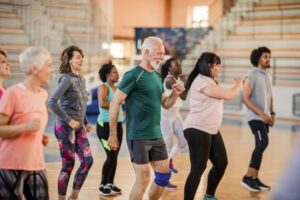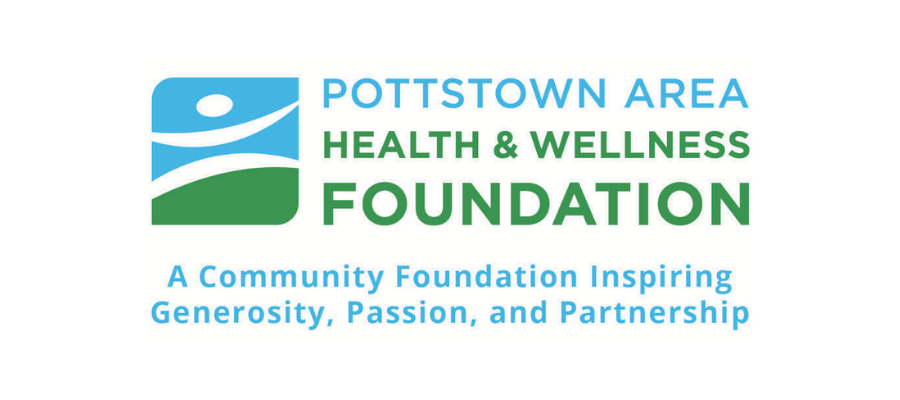The Exercises You Need Right Now
Summer is a great time to focus on fitness. The days are bright and motivating. Pottstown Area Health & Wellness Foundation (PAHWF) shares guidelines on the best workouts for your age.
Did you know your biological age can differ from your birth age? Your lifestyle can affect aging—making your body at the cellular level (and appearance) present younger or older. In addition to following a nutritious diet, avoiding cigarettes, and limiting alcohol consumption, exercise is proven to minimize the effects of aging. Here, we provide workout tips by decade. Start wherever you are. It is never too late.
Workouts in Your 20s

This is an ideal time to commit to fitness. Until now, school and childhood provided opportunities for regular exercise and activity. Develop a fitness habit as you start upon your adult life. Make it non-negotiable so you automatically schedule it around job interviews, work, relationships, and all life will increasingly demand from you.
Exercise Suggestions: The sky is the limit. You are young and your metabolism is fast. Start small but work up to high-intensity training most days of the week. Choose something you enjoy to ensure consistency. Regularly include flexibility and strength training. Don’t forget to make time for quality sleep for optimal recovery, especially after a day with high-intensity exercise.
Frequency: 2.5–5 hours of moderate-intensity exercise, or 75 minutes–2.5 hours of vigorous-intensity exercise, per week
Workouts in Your 30s & 40s
Workouts and diet become increasingly important during this time. If you have not been exercising regularly, you may begin to lose muscle mass around age 35. Life is probably increasingly busy at this stage, balancing career and family. Try to elevate your heart rate daily, even if only in 20-minute increments. Diversify workouts to avoid muscle memory and boredom.
Exercise Suggestions: Consider joining a gym to help with accountability. Workout buddies or a personal trainer help you remain committed and offer stress-relief in addition to the workout itself. Practicing yoga or Pilates is especially helpful for managing stress, with their focus on mindfulness and breathing. These will benefit you throughout your life. Perform strength training about three times a week, either using weights or your own body for resistance. Vary your cardio workouts to keep them physically and mentally effective. It’s important to maintain the habit as you approach middle age. Also, you probably noticed you cannot eat the same as you did in your 20s and get away with it!
Frequency: 2.5–5 hours of moderate-intensity exercise, or 75 minutes–2.5 hours of vigorous-intensity exercise, per week
Workouts in Your 50s & 60s
At this stage, you may discover more free time as your career settles and any kids fly the nest. That’s helpful because you will need it for exercise! A regular fitness routine is essential for maintaining good health in your later years as you become more susceptible to conditions like heart disease, high cholesterol, and arthritis. All of these can benefit from exercise. Workouts also improve cognitive function.
Exercise Suggestions: Focus on strength training to build bone and muscle mass. Include balance and flexibility exercises, which have long-lasting benefits for independent living in later years. Include regular cardio exercises but limit high-intensity workouts to only once or twice weekly. Invest time in learning new active hobbies like pickleball, tennis, golf, or dance. These are fun ways to stay fit and stimulate brain development.
Frequency: 2.5 hours of moderate-intensity exercise per week, plus strength training
Workouts in Your 70s
This is a growing age group at fitness centers as older folks recognize the value of exercise. You feel better, move better, and radiate a healthy mind and body. Remember—you are training for your senior independence.
Exercise Suggestions: Work out according to your body on any given day. If arthritis is affecting you, hit the pool for fluid movement without joint strain. Don’t let common aches keep you couch-bound. Motion is lotion. If you’re tired, skip cardio and practice some gentle T’ai Chi or moderate-paced walking. Continue to strength train for bone health and muscle mass. Engage your body in all directions to improve balance and reduce risk of injuries.
Frequency: 2.5 hours of moderate-intensity exercise per week, plus two strength training sessions per week; include activities that improve balance and flexibility
Workouts in Your 80s & Beyond
Keep doing the healthy activities you enjoy since they have been working for you! Be proud of your healthy lifestyle resulting from the fitness routine you have followed. If you are beginning a new routine, start slow. Just be sure to start. What you do today gives you strength and stamina for tomorrow. Respect your body. Don’t overdo it when fatigued or not feeling well. At any age, this can cause injury and setbacks.
Exercise Suggestions: Stay active through a mix of formal workouts and light recreational activities like gardening, walking, or practicing yoga and Pilates. Continue to change up your exercises to keep your mind energized as well as your body. Focus on strength training and flexibility. Aquatics can be a soothing way to accomplish low-impact workouts with impressive results.
Frequency: 2.5 hours of moderate-intensity exercise per week, plus two strength training sessions per week; focus on activities that improve balance and flexibility
At any age, be sure to get annual physicals. Check in with your doctor before beginning a fitness program, especially if it is strenuous or you have a health condition. To find a local physician, regardless of finances or healthcare plan, visit Community Health and Dental Care.
Although a formal fitness routine is best, stay active however your body, life stage, and day allows. For additional motivation and resources, visit PAHWF’s fitness resources. Movement helps us age well—the more, the better. Do whatever you can, when you can, and you will always be lapping those on the couch.
